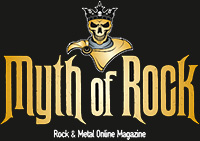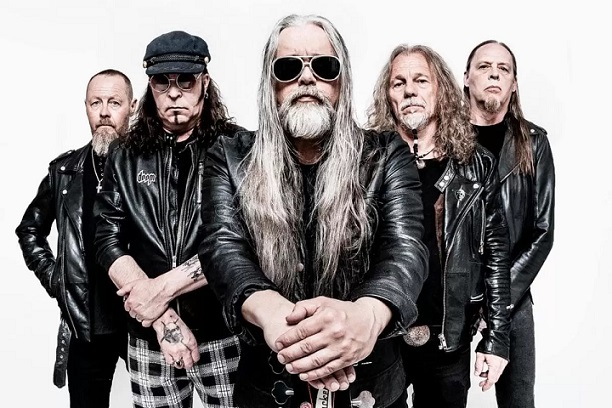Few bands have embodied the sheer power and enduring legacy of doom metal quite like Candlemass. Emerging from the icy streets of Upplands Vasby (a suburb of Stockholm, Sweden) in the 1984, Candlemass not only revitalized a genre but also became the quintessential figurehead of epic doom metal, influencing countless artists and carving out a space for themselves as one of metal’s most iconic acts. Their journey, from underground beginnings to international acclaim, is a tale of perseverance, innovation and an unyielding commitment to dark, heavy music. This retrospective will dive deep into the band’s story, their discography, influences, legacy, and some trivia, exploring why Candlemass remains a monumental force in metal today – just before some days before the band’s live show in Athens, Greece (Fuzz Club, 02/11/2024).
by Dimitris Zacharopoulos
Beginnings
Candlemass was founded by bassist and primary songwriter Leif Edling, following the dissolution of his previous band, Nemesis. While doom metal was far from new, with pioneering acts like Black Sabbath laying its foundations in the 1970s, the genre had become more associated with sludgy, down-tuned riffs and a generally more underground ethos by the time the ’80s rolled around. Edling, however, sought something more grandiose and theatrical—an epic take on doom metal that combined crushing heaviness with elements of classical music and operatic vocals.
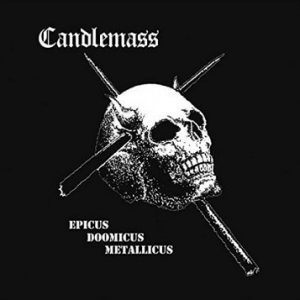
The band’s first incarnation featured Mats “Mappe” Björkman on guitar, Mats Ekström on drums and Johan Längquist on vocals. Their debut album, “Epicus Doomicus Metallicus” (1986), set the template not just for their career, but for what would become known as “epic doom metal”—a subgenre that focused on grand, melancholic atmospheres and larger-than-life song structures. Though Längquist would not remain with the band, his vocal performance on the debut remains one of doom metal’s most celebrated.
The Golden Era
After this exceptional, first album, Candlemass solidified their classic lineup with Messiah Marcolin, whose operatic and dramatic vocal style would become as iconic as the band’s sound itself. Together with Marcolin, Candlemass released a string of albums that would cement their place in metal history.
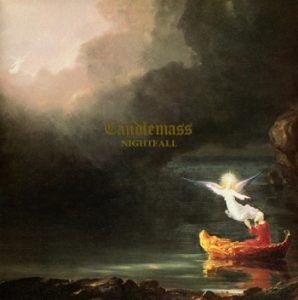
With Messiah Marcolin now on vocals, “Nightfall” (1987) is often considered the band’s masterpiece. Tracks like “The Well of Souls” and “Bewitched” are defining moments in the band’s catalog, and the album elevated Candlemass to new heights. Marcolin’s presence, combined with the band’s increasingly sophisticated songwriting, made this album an instant classic.
While not as critically lauded as its predecessor, “Ancient Dreams” (1988) continued Candlemass’s tradition of epic doom with tracks like “Mirror Mirror” and “The Bells of Acheron”. The album delves further into themes of mysticism, death and despair, solidifying the band’s thematic consistency.
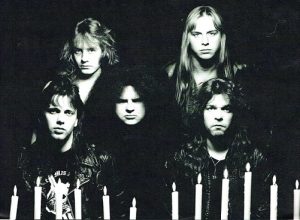
With “Tales of Creation” (1989), Candlemass reached a new level of ambition. This concept album, dealing with creation myths and existential themes, showcased the band’s ability to fuse storytelling with their signature doom sound. The intricate arrangements and varied compositions made this album another high point in their discography.
The Later Years
Due to internal disputes, Messiah Marcolin left the band in 1991 and Candlemass recruited Thomas Vikström for vocals. “Chapter VI” (1992) represented a shift in the band’s sound—less operatic and more in tune with the evolving metal landscape of the early ’90s. While it was a solid effort, the album did not achieve the same success as the previous masterpieces, and Candlemass would go on hiatus soon after.
Candlemass returned after six years, with a different lineup and a more experimental sound. The “Dactylis Glomerata” album blends doom metal with elements of stoner rock and progressive rock/metal, and while it may not be considered a classic, it marked an important point in the band’s evolution.
1999 and “From the 13th Sun“ is released (with Björn Flodqvist on vocals, just like in “Dactylis Glomerata”). This album saw Candlemass dive even further into experimentation, drawing heavy influence from the spacey sounds of bands like Hawkwind. Though divisive among fans, “From the 13th Sun” remains an interesting departure from the band’s typical formula.
The self-titled album of 2005 marked the return of Messiah Marcolin, and with it, a return to form. Tracks like “Black Dwarf” and “Seven Silver Keys” brought the band back to their doom roots, and the album was hailed as a triumphant comeback.
With Robert Lowe (of Solitude Aeturnus fame) now handling vocals, “King of the Grey Islands” (2007) and “Death Magic Doom” (2009) continued Candlemass’s revival. Songs like “Devil Seed” and “If I Ever Die” showed that the band was still capable of creating high-quality doom metal even after decades in the business.
The albums that followed, “Psalms for the Dead” (2012),”The Door to Doom” (2019) and “Sweet Evil Sun” (2022), continue the band’s tradition and legacy of melancholic, crushing riffs and majestic doom soundscapes. Candlemass remains as vital as ever, now with Johan Längqvist, the first Candlemass singer in the band’s debut album) behind the microphone!
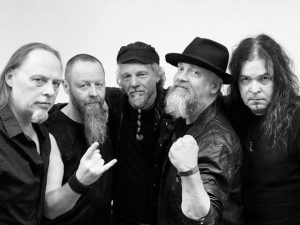
Influences and inspiration
Candlemass’s biggest influence is undoubtedly Black Sabbath, and particularly the slower, doom-laden tracks that Tony Iommi and company pioneered in the early ’70s. Edling has frequently cited Sabbath’s “Master of Reality” and “Vol. 4” as key inspirations, not only in sound but in atmosphere and lyrical depth. Beyond Black Sabbath, Candlemass also drew from classical music, progressive rock and the burgeoning heavy metal scene of the early 1980s, including bands like Mercyful Fate, Angelwitch, Witchfynde and Pentagram. Their sound was further shaped by gothic and neoclassical influences, with the use of operatic vocals and elaborate song structures helping to create the “epic” aspect of their doom.
Their eternal impact
Candlemass’s influence on heavy metal is hard to overstate. They are widely regarded as one of the key architects of doom metal, with their style influencing not just epic doom bands, but a broad spectrum of genres—from gothic metal to stoner and sludge metal. Bands like Solitude Aeturnus, Reverend Bizarre and While Heaven Wept have all drawn heavily from Candlemass’s unique mix of grandeur and heaviness. Moreover, Candlemass’s revival in the 2000s proved that they were not a mere relic of the past but a continuing creative force. Their impact is seen in the modern doom scene, where bands like Pallbearer and Khemmis carry forward the epic doom torch, mixing emotional weight with colossal, slow-paced riffs in a manner reminiscent of the Swedish legends.
Did you know that …
- Candlemass belong to the “big four of doom metal”. The other three are Pentagram, Saint Vitus and Trouble.
- Messiah Marcolin’s image was unique: he wore flowing robes and had a monk-like appearance!
- In 1994 Candlemass disbanded, partly due to the commercial failure of “Chapter VI” and partly because Edling had formed a new project, Abstrakt Algebra.
- Candlemass received a Grammy nomination in 2010 for the song “Lucifer Rising” further showcasing their enduring relevance in the metal world.
- Tony Iommi’s guest appearance on “The Door to Doom” was a dream come true for Edling, as the Black Sabbath guitarist had been one of his biggest idols growing up.
An Epilogue
Candlemass’s story is one of triumph, reinvention and an unwavering commitment to the darkest corners of heavy metal. Over nearly four decades, they have navigated lineup changes, musical shifts, and the ebbs and flows of the metal scene to emerge as one of the genre’s most respected and influential bands. Their discography shows the power of doom metal, and their legacy is one that will continue to shape the genre for years to come. Bow to the masters!
